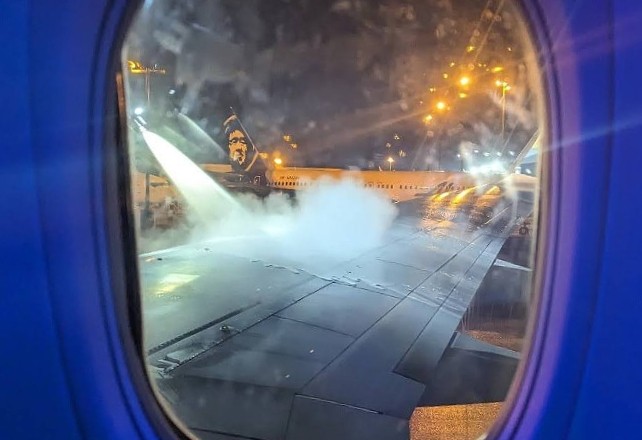
A year and a half ago, the nations of the world agreed on a goal of keeping warming to less than a 1.5 degree Celsius temperature rise over pre-industrial averages. At current levels of warming (about 1.2 degrees), we’ve already seen widespread destruction—unprecedented and deadly typhoons, wildfires, heat-waves, drought, and flooding—and the Antarctic ice sheet has entered into a process of collapse that scientists fear is unstoppable. Beyond 1.5 degrees, scientists have warned, this climatic instability gathers force in ways that put lives worldwide at profound risk.
At current rates of emissions, we have less than four years before stopping short of 1.5 degrees becomes impossible. If we have not aggressively reduced emissions by then, that is when we have to stop emitting in order to avoid heating beyond that threshold. Nevertheless, our president has boldly stuck his head in the sand, given the Global South the finger, and handed over national energy policy to the fossil fuel lobby.
At the moment, there is not a thing that we in Washington State can do about our president’s decision-making. What we can do is move ahead with statewide and local policies that model how responsible regions can move to swiftly cut greenhouse gas emissions in line with what’s necessary to stay below 1.5 degrees. We are one of the most innovative, skilled, and progressive places in the world—we can remind the rest of the U.S. of the vision and inspiration we’re capable of when we decide to do the right thing.
So with the “greenest governor”, and with Seattle’s Climate Action Plan (CAP) considered best in the nation, surely we’re doing just that? Not even close.
With the resolution passed yesterday by the Seattle City Council, we affirmed the 1.5 degree target and said that we’d update our climate action plan to be aligned with that goal. Yet we allowed until the end of the year before we even get a report on what those changes might look like.
Six months to recommend updates to our climate action plan? Then maybe what—a few years to implement those recommendations? When we have less than four years to sharply reduce emissions?
History will not call this bold or inspiring.
What does bold look like? Germany has set a 2030 deadline for the end of gas-powered cars. India has cancelled nearly all its new coal plants. China has committed $360 billion to renewables in the next two years. Acting at the city or state level is different, of course, but our goal—aligning policies with the need to limit warming to 1.5 degrees Celsius—must be the same.
There’s nothing stopping us from immediately setting city- or county-wide emissions targets in line with this goal; it could be done within two weeks.
Meanwhile, Governor Inslee has been busy working with governors from New York and California to build up the Climate Alliance, which would be great… if the Climate Alliance were committing itself to the overarching 1.5 degree goal and acting accordingly. But it’s not. Instead, these governors—the ones supposedly strong on climate—are merely “committed to achieving the U.S. goal of reducing emissions 26% to 28% from 2005 levels and meeting or exceeding the targets of the federal Clean Power Plan.” This target correlates with temperature rises of over 3 degrees Celsius. Why the disparity? Everyone knew the commitments made in Paris, like this one, didn’t match the 1.5 degree goal; the agreement was simply meant to be a first step. “Affirming” the old commitment a year and a half later is not enough.
I want to believe in our local leaders. I want nothing more than for all of us to rise to this challenge. But history tells us that we can’t be bold by consensus, and if we want to lead, we must act with those willing to be bold. The current Climate Alliance is not that group; we’ll have to be bold on our own.
Saving a stable planet is our moon shot; if we don’t aim for the moon itself—rather than just somewhere between here and there, we certainly won’t land on it. No state has a better chance to be a real leader on climate, mapping a path for the rest of the country to follow—but we have to do it right, and do it now.
We can rise to this challenge with a full commitment to the emissions targets necessitated by the 1.5 degree limit. Because of the outrage generated by the withdrawal from Paris, there is real impetus for progress, but it won’t last forever. The path that we set in coming weeks must be forthright and bold; history will judge us on this.
Emily Johnston is a Seattle writer and climate activist; she was a founder of 350 Seattle.














